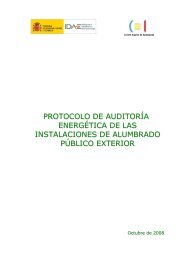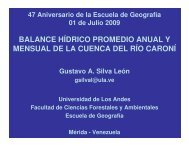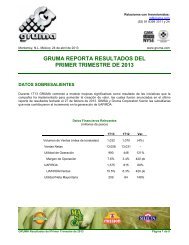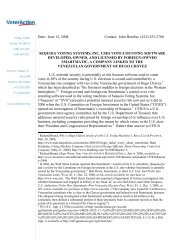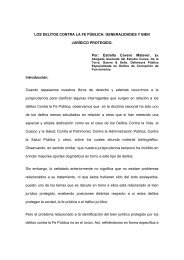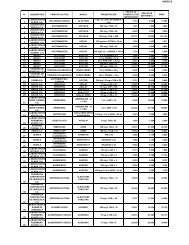broschuere ee zahlen en bf
broschuere ee zahlen en bf
broschuere ee zahlen en bf
Create successful ePaper yourself
Turn your PDF publications into a flip-book with our unique Google optimized e-Paper software.
1. Energy supply from photovoltaic and solar thermal systems<br />
Photovoltaic systems<br />
Electricity g<strong>en</strong>eration from 2002 to 2010 corresponds to the annual statem<strong>en</strong>ts of the transmission<br />
grid operators under the R<strong>en</strong>ewable Energy Sources Act. Up to the <strong>en</strong>d of 2001, electricity<br />
g<strong>en</strong>eration was calculated on the basis of the installed capacity at the beginning of<br />
the year plus half the relevant year’s capacity increase, multiplied by a specific power yield.<br />
The specific power yield was made available as an average figure for Germany by the Solar<br />
Energy Association [26]. The capacity increase was halved to take account of the fact that<br />
new installations can only make a pro rata contribution to electricity g<strong>en</strong>eration in the first<br />
year.<br />
Solar thermal systems<br />
The heat supply quoted is calculated from the installed collector area and a mean annual<br />
heat yield. In the case of hot-water supply installations this is 450 kWh/m 2 *a. In rec<strong>en</strong>t years<br />
installations solely for hot-water g<strong>en</strong>eration have b<strong>ee</strong>n joined by increasing numbers of solar<br />
thermal installations for combined hot water supply and c<strong>en</strong>tral heating support.<br />
Because the g<strong>en</strong>eration pot<strong>en</strong>tial of installations for c<strong>en</strong>tral heating support cannot be fully exploited<br />
in the summer months, a reduced heat yield of 300 kWh/m 2 *a is used for calculation<br />
purposes here. A yield of 300 kWh/m 2 *a is also used for swimming pool absorber systems.<br />
Because the gradual addition of new installations during the year means that the collector area<br />
available during the year is smaller than the installed capacity at the <strong>en</strong>d of the year, only half<br />
the increase in area for the year is used wh<strong>en</strong> calculating the heat supply for that year.<br />
A factor of 0.7 kW th /m² is used for converting the area in to capacity [131].<br />
2. CO 2 equival<strong>en</strong>t and SO 2 equival<strong>en</strong>t<br />
The “Kyoto gases” CO 2 , CH 4 , N 2 O, SF 6 , PFC and HFC, are important gr<strong>ee</strong>nhouse gases which<br />
are to be reduced under the Kyoto Protocol. The ext<strong>en</strong>t to which they contribute to the<br />
gr<strong>ee</strong>nhouse effect differs. To be able to compare the gr<strong>ee</strong>nhouse effect of the individual<br />
gases, they are each assigned a factor – the relative global warming pot<strong>en</strong>tial (GWP) – which<br />
serves as a measure of their gr<strong>ee</strong>nhouse effect in terms of the refer<strong>en</strong>ce substance CO 2 .<br />
Global warming pot<strong>en</strong>tial is specified in the unit “CO 2 equival<strong>en</strong>t” and is calculated by multiplying<br />
the global warming pot<strong>en</strong>tial by the mass of the gas in question. It states the quantity<br />
of CO 2 that would have the same gr<strong>ee</strong>nhouse effect as the gas in question over a period of<br />
100 years.<br />
In view of the poor data availability situation, only the gr<strong>ee</strong>nhouse gases CO 2 , CH 4 and N 2 O<br />
are tak<strong>en</strong> into account.<br />
ANNEx: METhODOLOGICAL NOTES<br />
R<strong>en</strong>ewable Energy Sources in Figures<br />
97




